Knowledge building and sharing
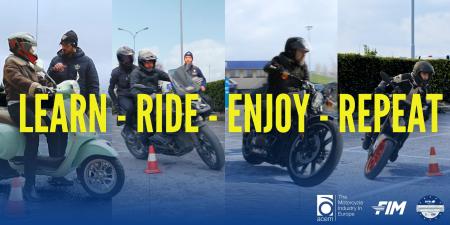
Monday, June 30, 2025
The human factor has repeatedly been shown to be the most critical factor in accidents involving riders. For this reason, lifelong training should be encouraged, reaching out to new and existing motorcyclists. High-quality training is instrumental in achieving the EU safety targets on the way to Vision Zero. To ensure that society fully benefits from all the advantages offered by motorcycles, more work is necessary to further improve the safety record of riders across Europe.
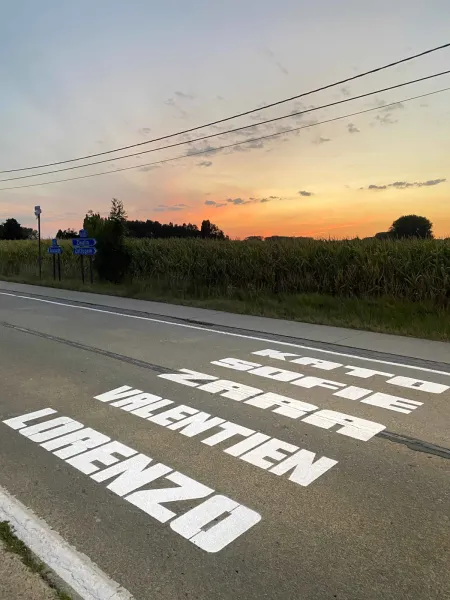
Friday, May 2, 2025
Veilig Over is een initiatief dat ernaar streeft voetgangers veilig te laten oversteken en dat bovendien iedereen toestaat om ook zélf aan te duiden waar er nood is aan een veilige oversteekplaats, via een onlineplatform veiligover.be. Samen oversteken veilig maken, dat is de ambitie van ‘Veilig Over’. Dit doen we met een unieke samenwerking met lokale en regionale overheden & burgerparticipatie en citizen sciene & wetenschappelijke evaluatie (met Vias institute). Dit alles met als resultaat: de concrete verwezenlijking van een veilige oversteekplaats op het terrein!
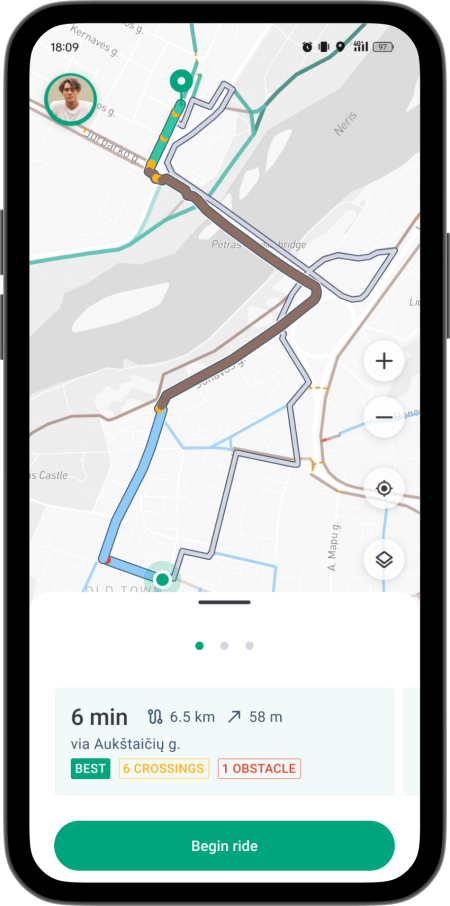
Thursday, April 24, 2025
We've developed an app with a safe map for cycling. Routes are made according to quality of infrastructure (user, company gathered and municipalities info), hazards on the road.
Users can report bad infrastructure or good things about it and routes are calculated accordingly.
Users can report bad infrastructure or good things about it and routes are calculated accordingly.
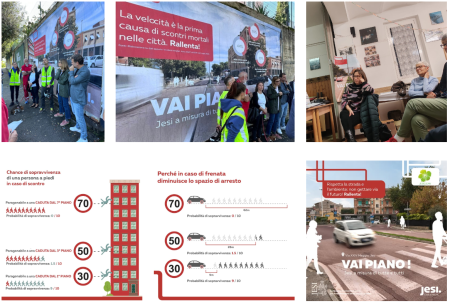
Wednesday, April 16, 2025
Una delle sfide principali riguarda una cultura radicata che privilegia l'uso dell'automobile, scoraggiando l'adozione di mezzi pubblici e di trasporti alternativi. Questo comportamento si riflette in un mancato rispetto delle normative del codice della strada. Inoltre, c'è una scarsa attenzione verso la protezione degli utenti più vulnerabili, come pedoni e ciclisti. Questo atteggiamento compromette la vivibilità della città, che viene vissuta più come un luogo di transito che come uno spazio di incontro e socializzazione.

Thursday, April 10, 2025
Road safety in Europe and worldwide is still tragically compromised by a high number of accidents and avoidable loss of human lives.
This is compounded by the worrying frequency of vehicle recalls for brake problems, with over 3 million units affected in just two years (ANSA data), a symptom of an intrinsic vulnerability in current systems.
The dependence on rare materials in traditional braking systems and new technologies not only creates economic instability but also generates significant geopolitical implications.
Furthermore, there remains a lack of a reliable and universal mechanical solution capable of improving braking and ensuring safety in the event of failure.
These challenges highlight the urgent need for innovative solutions like DUOBBRAK, capable of overcoming the limitations of current systems, despite the resistance, and mostly the indifference, encountered in promoting it within the industry, accelerators, and public and private institutions
This is compounded by the worrying frequency of vehicle recalls for brake problems, with over 3 million units affected in just two years (ANSA data), a symptom of an intrinsic vulnerability in current systems.
The dependence on rare materials in traditional braking systems and new technologies not only creates economic instability but also generates significant geopolitical implications.
Furthermore, there remains a lack of a reliable and universal mechanical solution capable of improving braking and ensuring safety in the event of failure.
These challenges highlight the urgent need for innovative solutions like DUOBBRAK, capable of overcoming the limitations of current systems, despite the resistance, and mostly the indifference, encountered in promoting it within the industry, accelerators, and public and private institutions

Wednesday, April 9, 2025
The C•AUTO project addresses several persistent and emerging road safety challenges, particularly within urban environments. One of the main problems we focus on is excessive vehicle speed in sensitive areas such as school zones, hospitals, pedestrian crossings, and high-risk intersections. Despite existing signage and infrastructure, speeding remains a leading cause of accidents, particularly those involving vulnerable road users like children, the elderly, and cyclists.
Another key issue is the lack of adaptive and proactive tools to manage traffic behavior in real-time. Current solutions often react after incidents occur, rather than preventing them. C•AUTO proposes an innovative approach through the deployment of intelligent electric vehicles that function as mobile “City Safety Cars.” These vehicles travel at regulated speeds and use predictive data to position themselves strategically in urban areas with higher accident risk.
Furthermore, C•AUTO tackles the challenge of building a shared safety culture. It aims to influence driver behavior through presence, not punishment—creating an environment of passive regulation, education, and visual deterrence rather than relying solely on fines or enforcement.
By addressing both infrastructural gaps and behavioral aspects, C•AUTO contributes to achieving the Vision Zero goal of eliminating fatalities and serious injuries on our roads.
Another key issue is the lack of adaptive and proactive tools to manage traffic behavior in real-time. Current solutions often react after incidents occur, rather than preventing them. C•AUTO proposes an innovative approach through the deployment of intelligent electric vehicles that function as mobile “City Safety Cars.” These vehicles travel at regulated speeds and use predictive data to position themselves strategically in urban areas with higher accident risk.
Furthermore, C•AUTO tackles the challenge of building a shared safety culture. It aims to influence driver behavior through presence, not punishment—creating an environment of passive regulation, education, and visual deterrence rather than relying solely on fines or enforcement.
By addressing both infrastructural gaps and behavioral aspects, C•AUTO contributes to achieving the Vision Zero goal of eliminating fatalities and serious injuries on our roads.

Friday, April 4, 2025
Valerann is tackling critical road safety challenges associated with complexity and criticality of road traffic management and road safety.
Traditional road monitoring systems often rely heavily on fixed infrastructure, which can be limited in coverage and responsiveness. The increase of data sources (CAV, crowdsourced data, navigation apps etc) brings an opportunity to enrich situational awareness of TMCs; but it also brings a challenge of data fragmentation, data overload and confusion as deliver high volumes of unstructured data and false positives, overwhelming operators and delaying meaningful action. In response, Valerann deployed Lanternn by Valerann™, an AI-powered data fusion platform that transforms how traffic data is collected, processed, and acted upon. The key safety challenge being addressed is the speed and accuracy of incident detection. Delays in identifying road incidents can increase the risk of secondary collisions, congestion, and response inefficiency. LbV synthesises diverse data sources—floating car data, roadside sensors, navigation apps, weather feeds, and even social media—into a single coherent operational picture. This fusion allows for earlier detection of accidents, faster validation, and more efficient emergency response. The system not only enhances situational awareness but also supports smarter infrastructure planning by highlighting patterns and bottlenecks. Ultimately, Valerann is modernising traffic management for safer, more resilient roads without the need for costly physical infrastructure expansion.
Traditional road monitoring systems often rely heavily on fixed infrastructure, which can be limited in coverage and responsiveness. The increase of data sources (CAV, crowdsourced data, navigation apps etc) brings an opportunity to enrich situational awareness of TMCs; but it also brings a challenge of data fragmentation, data overload and confusion as deliver high volumes of unstructured data and false positives, overwhelming operators and delaying meaningful action. In response, Valerann deployed Lanternn by Valerann™, an AI-powered data fusion platform that transforms how traffic data is collected, processed, and acted upon. The key safety challenge being addressed is the speed and accuracy of incident detection. Delays in identifying road incidents can increase the risk of secondary collisions, congestion, and response inefficiency. LbV synthesises diverse data sources—floating car data, roadside sensors, navigation apps, weather feeds, and even social media—into a single coherent operational picture. This fusion allows for earlier detection of accidents, faster validation, and more efficient emergency response. The system not only enhances situational awareness but also supports smarter infrastructure planning by highlighting patterns and bottlenecks. Ultimately, Valerann is modernising traffic management for safer, more resilient roads without the need for costly physical infrastructure expansion.
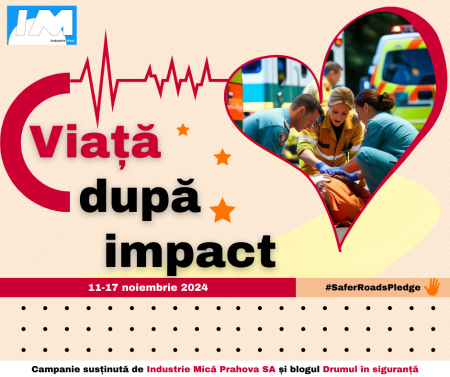
Thursday, April 3, 2025
According to European Commission statistics, around 20,400 people lost their lives in road accidents across the European Union in 2023, a decrease of only 1 percent compared to the previous year. There were 46 traffic deaths per million inhabitants. While the long-term trend shows a 10% reduction compared to 2019, the current rate of decline is lower than the 4.5% annual reduction needed to reach the EU's target of halving road deaths by 2030.
Unfortunately, Romania continues to be positioned among the first countries in terms of mortality rate in road accidents. Thus, the overall ranking of mortality rates in EU countries has not changed significantly compared to the previous year, with the safest roads being in Sweden (22 deaths per million inhabitants) and Denmark (26) while Bulgaria (82) and Romania (81) reported the highest mortality rates in 2023.
This campaign is primarily dedicated to the people who act for life in the minutes and hours after a car crash, and to those who help make the transition process of the families affected by road crashes to a normal life as smooth as possible. At the same time, we want to help people understand the devastating effect of road accidents on those involved.
Unfortunately, Romania continues to be positioned among the first countries in terms of mortality rate in road accidents. Thus, the overall ranking of mortality rates in EU countries has not changed significantly compared to the previous year, with the safest roads being in Sweden (22 deaths per million inhabitants) and Denmark (26) while Bulgaria (82) and Romania (81) reported the highest mortality rates in 2023.
This campaign is primarily dedicated to the people who act for life in the minutes and hours after a car crash, and to those who help make the transition process of the families affected by road crashes to a normal life as smooth as possible. At the same time, we want to help people understand the devastating effect of road accidents on those involved.
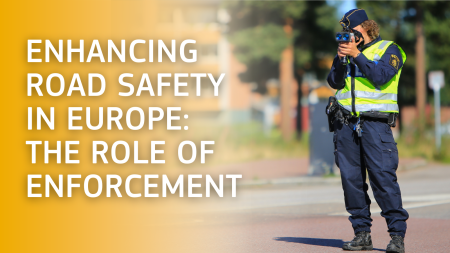

Wednesday, March 19, 2025
The overall target of the KFV podcast is to provide important and usefull tips for people who care about their personal safety and the well-being of their loved ones in the everyday life.
In each episode of the KFV podcast, two KFV experts talk for around 20 minutes about a topic from everyday life: about current issues of safe road traffic as well as accident-free relaxation during sport and exercise in nature, but also about the pitfalls of getting older as well as the turbulent life with children and teenagers.
With life experience, specialist knowledge and a good dose of humour, both moderators provide important tips and back ground information about accident risks, accident occurrence and accident prevention.
Here is a little taster of the content of the first three episodes published in March 2023, April 2023 and May 2023:
Episode 1: ‘L17: the best route to a driving licence?’
L17 is currently the most comprehensive driver training course on the way to a B driving licence. But driving the first 3,000 kilometres with your own child at the wheel can be nerve-wracking. Is the effort, courage and extra work really worth it?
On air: Monday, 11 March 2023
Episode 2: ‘Starting the motorbike season: why are masking effects life-threatening and ellipses life-saving?’
Motorcycling is back in fashion among the 40-plus generation. Since 2000, the number of motorbikes in Austria has more than doubled. But the streamlined silhouette is also the greatest danger: single-track bikes are virtually invisible in many traffic situations. How can motorcycling remain a safe pleasure?
On air: Monday, 17 April 2023
Episode 3: ‘Children & water: fascination, pleasure, risk. How to ensure water fun - with safety!’
Children and water - that means fun, but it's also a risky combination. For small children, paddling pools just a few centimetres deep can be disastrous if left unattended. What are the best safety measures for swimming pools, garden ponds and the like?
On Air: Monday, 15th May 2023
Since March 2023 the KFV Podcast has been published with a new episode once a month.
In each episode of the KFV podcast, two KFV experts talk for around 20 minutes about a topic from everyday life: about current issues of safe road traffic as well as accident-free relaxation during sport and exercise in nature, but also about the pitfalls of getting older as well as the turbulent life with children and teenagers.
With life experience, specialist knowledge and a good dose of humour, both moderators provide important tips and back ground information about accident risks, accident occurrence and accident prevention.
Here is a little taster of the content of the first three episodes published in March 2023, April 2023 and May 2023:
Episode 1: ‘L17: the best route to a driving licence?’
L17 is currently the most comprehensive driver training course on the way to a B driving licence. But driving the first 3,000 kilometres with your own child at the wheel can be nerve-wracking. Is the effort, courage and extra work really worth it?
On air: Monday, 11 March 2023
Episode 2: ‘Starting the motorbike season: why are masking effects life-threatening and ellipses life-saving?’
Motorcycling is back in fashion among the 40-plus generation. Since 2000, the number of motorbikes in Austria has more than doubled. But the streamlined silhouette is also the greatest danger: single-track bikes are virtually invisible in many traffic situations. How can motorcycling remain a safe pleasure?
On air: Monday, 17 April 2023
Episode 3: ‘Children & water: fascination, pleasure, risk. How to ensure water fun - with safety!’
Children and water - that means fun, but it's also a risky combination. For small children, paddling pools just a few centimetres deep can be disastrous if left unattended. What are the best safety measures for swimming pools, garden ponds and the like?
On Air: Monday, 15th May 2023
Since March 2023 the KFV Podcast has been published with a new episode once a month.